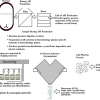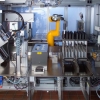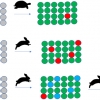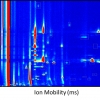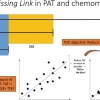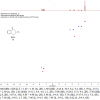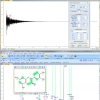Articles
A national data strategy
Tony Davies has discovered there is a new UK National Data Strategy and that it is on the right lines: echoing many of his suggestions in this column over many years.
Finding data in today’s information age: the Bayer COLID system
COLID is a Finding Aid, essentially a “catalogue of catalogues” collating any data source with which it is connected. It collects and provides metadata about basically any resource that you want to incorporate, links endpoints, such as spectra, in a repository or details in a chemicals database, and links it all semantically with any other related resource.
Letter to the Editor: origins of volume fraction for better calibrations
Following on from a recent column that reported on work which had shown that weight fractions were often incorrect concentration units to use in quantitative chemometric studies, Howard Mark goes into more detail.
Bill George
Peter McIntyre and Tony Davies remember Bill George, a real Welsh character and educator whose style and charisma influenced many to go on and not only stay in science but to rise to leading positions either in industry or academia.
Weights or measures for better calibration
In quantitative analysis, is it better to weigh materials when making up standard solutions or to use volumetric techniques? Traditionally, the answer has been “volume”, however, things may not be as straightforward as they seem. Henk-Jan and colleagues have conducted a new experiment, using robots for both sample preparation and spectroscopic analysis which may provide a definitive answer. Unfortunately, the answer must wait for publication of their paper, but Tony and Henk-Jan’s history of this question makes interesting reading nevertheless.
When to automate spectroscopic data processing
Whilst automation is not a panacea, it can improve the accuracy of manual tasks as well as freeing up our time for more challenging tasks. The authors explore some particular examples they have come across and lessons learned from them.
COVID-19 #2: Compliant data processing from your home office
Tony Davies and Mohan Cashyap discuss this topic with help from a number of industry experts. Whilst there are undoubted computing and networking issues for regulated industries in allowing working from home as if the user was in the lab, they are not insurmountable.
Letter to the Editor: Importance of citing full details of spectral library and search program
David is concerned about the “Importance of citing full details of spectral library and search program” in papers. As he points out, “even when the same mass spectrum is searched against two different versions of the NIST/EPA/NIH EI Mass Spectral Library using the same search program, two different compounds can be found as the first Hit”. There are many possible reasons for this, but the version of the spectral library used and the particular search program used make a difference, and should be included in all references.
COVID-19: Lock-down and up-skill
With a significant proportion of our regular readership probably under home lock-down, we were wondering if we could help you at this difficult time by pointing out some useful online resources. So, when we finally come out of this pandemic, you could do so better skilled and more up-to-date than when we went in to it.
Pre-processing spectroscopic data: for good or ill?
The authors offer many useful points to consider when using pre-processing techniques.
Sampling for spectroscopic analysis: consequences for multivariate calibration
The Sampling Column points out that incorrect sampling is irreversible: no amount of chemometrics or further samples will be able to produce a valid model if the sampling is not representative. This applies in flowing PAT analyses as much as in static.
Are you taking your Metadata seriously?
Tony Davies, Peter Lampen and Robert Lancashire are worried about their metadata, or perhaps the lack of it. With the explosion of data and ways to mine and make use of it, having accurate and appropriate metadata about analytical data sets is vital if they are to be reused efficiently or at all. This is also an area that is being increasingly targeted by regulators, with the US FDA issuing guidance at the end of 2018; others will follow. You have been warned.
Infrared spectroscopy and chemometrics to evaluate paper variability in document dating
Spectroscopy is widely used in forensics, but the determination of the age of documents was one application I had not considered. With a huge variety of papers and inks available, each with their own ageing profiles, and with such ageing depending on environmental factors, the determination of the age of a document is not straightforward. However, infrared spectroscopy and chemometrics may have the answer.
Are your spectroscopic data FAIR?
FAIR, which stands for Findable, Accessible, Interoperable, Reusable, is an essential framework for the future of analytical data. Tony has taken the opportunity of a recent conference in Amsterdam to update readers on FAIR and how it affects spectroscopic data.
What developments do you need to work more efficiently?
Tony Davies continues his quest to find out what you all need to work more efficiently. You will remember that in the last issue, Tony introduced his survey to discover what developments were needed in spectroscopy by readers. Some of the initial responses are explored, and Tony finds that he has opened a “can of worms”.
Simplifying spectroscopic supplementary data collection
Tony Davies and a number of others consider collecting supplementary spectroscopic data. Like Eurospec, the plan is to use such supplementary data not only to enhance the published paper, but also to aid thorough peer-review by allowing reviewers access to the full data rather than, as Tony puts it, “low-resolution images of data”. I’m sure you will be interested in a look at the future through this column.
Glowing colours of foods: application of fluorescence and chemometrics in food studies
Whilst the major components of food are usually non-fluorescent, many minor food components that affect its nutritive, compositional and technological quality are fluorescent. Given its sensitivity, ease of use and non-destructive nature, this makes it useful in many applications around monitoring food processing and in fundamental food research.
Spectroscopic data handling at petabyte scale
“Spectroscopic data handling at petabyte scale” shows how one institute is dealing with truly huge amounts of data, both in its collection and in its distribution to scientists for interpretation and analysis. At the same time, the institute has been able to incorporate best practice around the FAIR Data Stewardship of scientific information.
Keeping the dream alive
Tony Davies, Peter Lampen, Stephen Heller and Evan Bolton report on the future of the spectroscopic data collected as part of the EuroSpec programme. Its long-term preservation is being guaranteed through the PubChem Project of the US National Library of Medicine.
Another one bites the dust
Tony Davies and Mohan Cashyap are concerned about your NMR data. When an article starts “On 10 October 2014 the impossible happened”, you will want to take note! Following the withdrawal of Agilent from the NMR business, Tony and Mohan consider three solutions to ensuring your NMR data is available now and into the future. If you have an NMR of any make, you will want to read this. Do remember that you can comment on the web version of the article.

